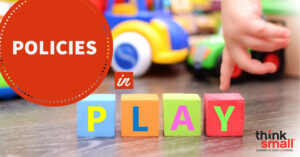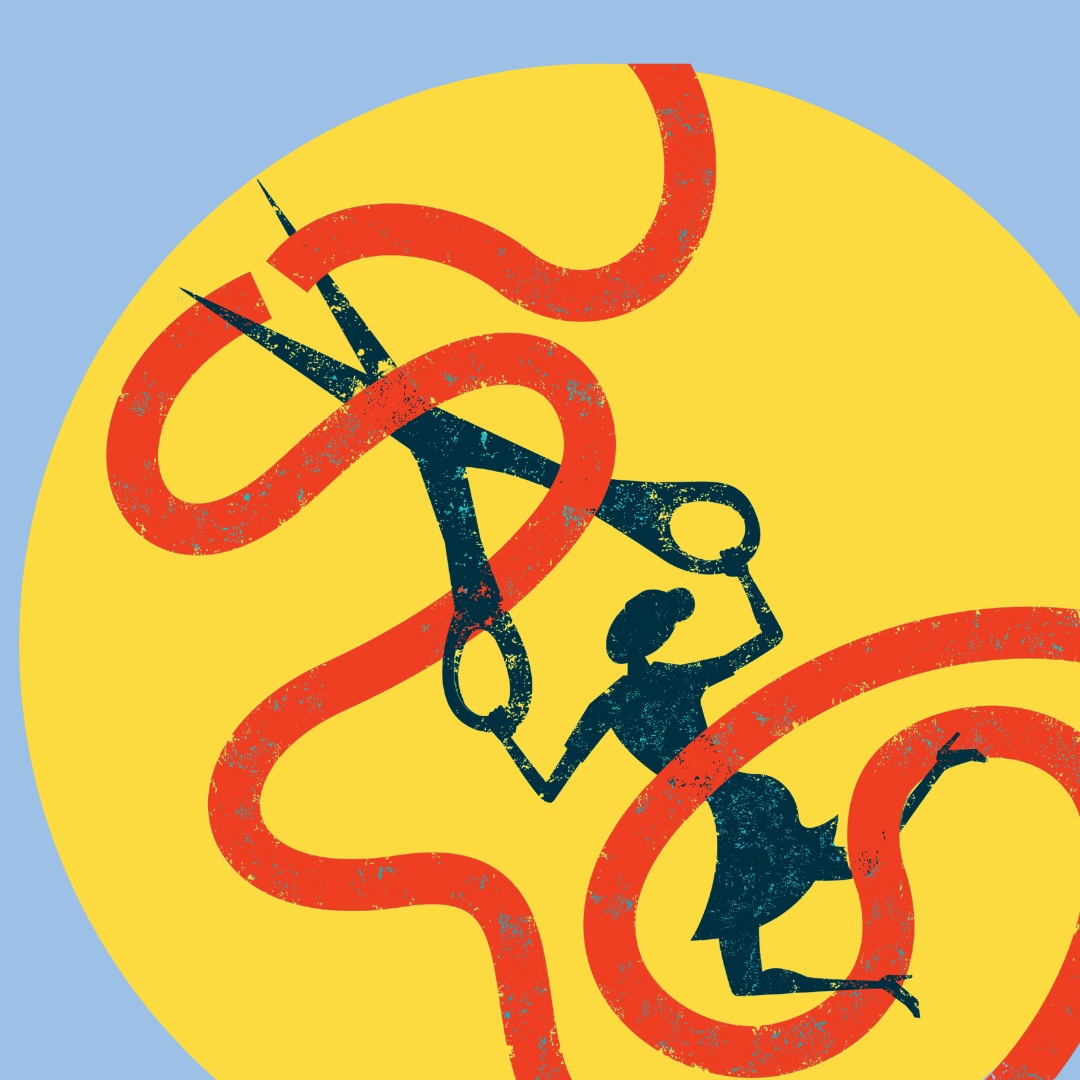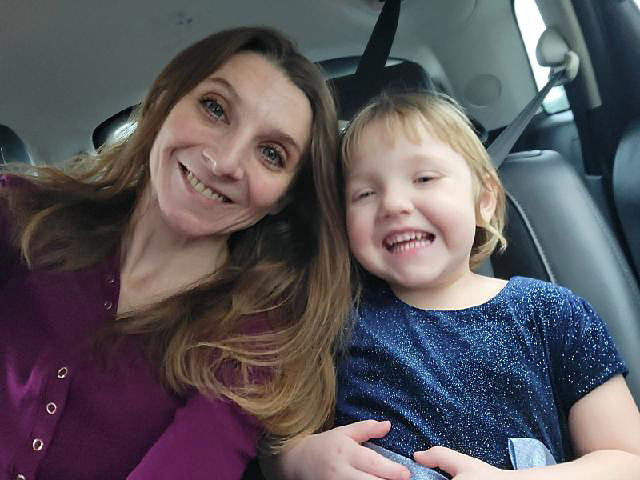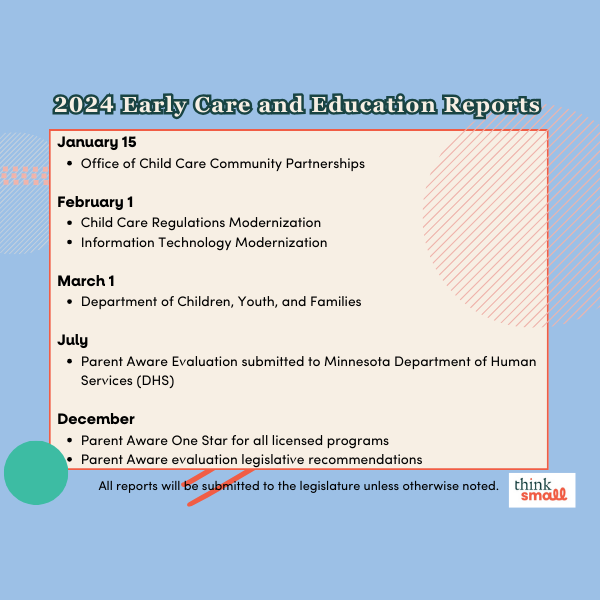The Policies in Play series takes a closer look at the recently passed state legislative policies that affect early care and education. We work with partners to find out what these policies look like in action and how they impact Minnesota children and families.
 Early childhood education and quality child care are among a handful of services that significantly reduce the incidence of child abuse and neglect, and also lessen negative effects when it does occur.That is why Safe Passage for Children and Think Small actively participated in the successful 2017 campaign by the MinneMinds Coalition to pass legislation giving top priority for early learning scholarships to children who are homeless, in child protection, or in foster care, and to open eligibility at birth rather than age three. As a result of this effort, $20.65 million was added to the state budget for the current biennium, bringing the total early childhood scholarship pool to $140.4 million.
Early childhood education and quality child care are among a handful of services that significantly reduce the incidence of child abuse and neglect, and also lessen negative effects when it does occur.That is why Safe Passage for Children and Think Small actively participated in the successful 2017 campaign by the MinneMinds Coalition to pass legislation giving top priority for early learning scholarships to children who are homeless, in child protection, or in foster care, and to open eligibility at birth rather than age three. As a result of this effort, $20.65 million was added to the state budget for the current biennium, bringing the total early childhood scholarship pool to $140.4 million. While the increase itself was modest, the policy changes in this statute mean that our most vulnerable children can now get critical child development opportunities on a priority basis, and during the much earlier period when it can best promote healthy brain development.This accomplishment caps years of effort by key legislative leaders and the MinneMinds Coalition, with a special push this session by a team that included Safe Passage, Close Gaps by 5, Hennepin County, People Serving People, and Hylden Advocacy and Law.In order for scholarships to actually reach this target group however, counties and tribes will have to develop new relationships and procedures with local child care providers which will likely bring implementation challenges.Here are three reasons why these scholarships are especially important to victims of child abuse and neglect.Reduce Number of Child DeathsThe 2016 report by the national Commission to Eliminate Child Abuse and Neglect Fatalities estimates that half of children killed by their caregivers are less than one year old, and 75% are under three. Since children are typically not in school during this period, the more common methods of identifying child maltreatment are not operating. If children who have been identified as being in high risk situations get priority for quality child care, the extra sets of eyes on them will provide additional safeguards. In addition, to the extent their siblings receive priority for child care, high risk situations are more likely to be identified in time to take appropriate action.Timely Intervention to Support Brain DevelopmentAs the early childhood community understands well, the earliest months and years in a child’s life are critical for brain development. When children are maltreated to the point of experiencing ‘toxic stress’, the process of creating cognitive building blocks can get put on hold because the infant or toddler is focusing on survival. Once the optimal time periods for developing each skill area are passed, it is difficult to backtrack and recapture them.For example, as this popular chart shows, language-related skills begin to develop prenatally and peak at eight months. Infants who are under extreme duress during this period tend to develop poorly in this area and have lifelong problems related to communication skills, including academic success and relationships.
While the increase itself was modest, the policy changes in this statute mean that our most vulnerable children can now get critical child development opportunities on a priority basis, and during the much earlier period when it can best promote healthy brain development.This accomplishment caps years of effort by key legislative leaders and the MinneMinds Coalition, with a special push this session by a team that included Safe Passage, Close Gaps by 5, Hennepin County, People Serving People, and Hylden Advocacy and Law.In order for scholarships to actually reach this target group however, counties and tribes will have to develop new relationships and procedures with local child care providers which will likely bring implementation challenges.Here are three reasons why these scholarships are especially important to victims of child abuse and neglect.Reduce Number of Child DeathsThe 2016 report by the national Commission to Eliminate Child Abuse and Neglect Fatalities estimates that half of children killed by their caregivers are less than one year old, and 75% are under three. Since children are typically not in school during this period, the more common methods of identifying child maltreatment are not operating. If children who have been identified as being in high risk situations get priority for quality child care, the extra sets of eyes on them will provide additional safeguards. In addition, to the extent their siblings receive priority for child care, high risk situations are more likely to be identified in time to take appropriate action.Timely Intervention to Support Brain DevelopmentAs the early childhood community understands well, the earliest months and years in a child’s life are critical for brain development. When children are maltreated to the point of experiencing ‘toxic stress’, the process of creating cognitive building blocks can get put on hold because the infant or toddler is focusing on survival. Once the optimal time periods for developing each skill area are passed, it is difficult to backtrack and recapture them.For example, as this popular chart shows, language-related skills begin to develop prenatally and peak at eight months. Infants who are under extreme duress during this period tend to develop poorly in this area and have lifelong problems related to communication skills, including academic success and relationships. In addition, researchers (Drs. Sacha Klein and Lauren Fries at Michigan State University, and Dr. Susan Jekielek at University of Michigan) have shown that children from birth to five who are in child protection due to neglect but receive quality child care services move from a low functioning level to the normal range in terms of language development within 18 months, compared to very little improvement for children who aren’t in child care. A number of other studies have shown decreases in repeat incidents of child maltreatment ranging between 29% and 52% once children enter Early Head Start or similar programs.(These and other articles mentioned here can be found on Safe Passage’s website under the Media and Research tab).The realities of early brain development mean that timely help for young victims of abuse and neglect is critical. Unfortunately the child protection system is not designed to respond quickly or decisively when children are being harmed. Our research with the Institute of Child Development at the University of Minnesota showed for example that average time between the first report to child protection and the initiation of a court action on behalf of the child is 39 months. In addition, 72% of caregivers in these cases were previously known to child protection, indicating that earlier actions were often ineffective. The involvement of early childhood programs in these situations can not only increase the number of eyes on children in these high risk settings, but also stimulates awareness by child protection professionals of the need to intervene more effectively and timely on behalf of vulnerable children.Reduce Negative Effects Open Child Protection and Foster Care CasesIf children in child protection cases remain at home, quality child care can reduce pressure on parents as they work to meet their case requirements, and also provide children with critical developmental opportunities during this period. The MSU researchers mentioned previously have also demonstrated that “Children are 3.78 times as likely to be in an out-of-home placement 18 months after entering the child welfare system if they have an unmet early childhood education need.” So simply having access to quality child care significantly reduces the need to remove children from their homes.When children are removed from their homes to foster care or a kinship placement, child care can also help avoid multiple disruptions in placements, which typically have a devastating impact on children. Another study (Meloy and Phillips) showed that children in foster care who are receiving child care are 80% less likely to experience a foster care disruption in a given year. Hennepin County has recognized this relationship and is leading the way in Minnesota by using local dollars to fund child care scholarships for children in its foster homes.Overall, the recent state policy changes will provide high-quality environments for very young children in vulnerable situations. Research supports this as a way reduce child fatalities and abuse, and provide children who are experiencing neglect with critical developmental opportunities.
In addition, researchers (Drs. Sacha Klein and Lauren Fries at Michigan State University, and Dr. Susan Jekielek at University of Michigan) have shown that children from birth to five who are in child protection due to neglect but receive quality child care services move from a low functioning level to the normal range in terms of language development within 18 months, compared to very little improvement for children who aren’t in child care. A number of other studies have shown decreases in repeat incidents of child maltreatment ranging between 29% and 52% once children enter Early Head Start or similar programs.(These and other articles mentioned here can be found on Safe Passage’s website under the Media and Research tab).The realities of early brain development mean that timely help for young victims of abuse and neglect is critical. Unfortunately the child protection system is not designed to respond quickly or decisively when children are being harmed. Our research with the Institute of Child Development at the University of Minnesota showed for example that average time between the first report to child protection and the initiation of a court action on behalf of the child is 39 months. In addition, 72% of caregivers in these cases were previously known to child protection, indicating that earlier actions were often ineffective. The involvement of early childhood programs in these situations can not only increase the number of eyes on children in these high risk settings, but also stimulates awareness by child protection professionals of the need to intervene more effectively and timely on behalf of vulnerable children.Reduce Negative Effects Open Child Protection and Foster Care CasesIf children in child protection cases remain at home, quality child care can reduce pressure on parents as they work to meet their case requirements, and also provide children with critical developmental opportunities during this period. The MSU researchers mentioned previously have also demonstrated that “Children are 3.78 times as likely to be in an out-of-home placement 18 months after entering the child welfare system if they have an unmet early childhood education need.” So simply having access to quality child care significantly reduces the need to remove children from their homes.When children are removed from their homes to foster care or a kinship placement, child care can also help avoid multiple disruptions in placements, which typically have a devastating impact on children. Another study (Meloy and Phillips) showed that children in foster care who are receiving child care are 80% less likely to experience a foster care disruption in a given year. Hennepin County has recognized this relationship and is leading the way in Minnesota by using local dollars to fund child care scholarships for children in its foster homes.Overall, the recent state policy changes will provide high-quality environments for very young children in vulnerable situations. Research supports this as a way reduce child fatalities and abuse, and provide children who are experiencing neglect with critical developmental opportunities.









